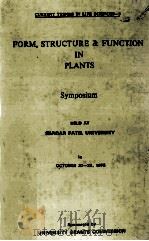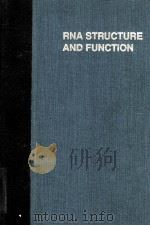《STRUCTURE AND FUNCTION IN CRIMINAL LAW》
| 作者 | PAUL H.ROBINSON 编者 |
|---|---|
| 出版 | CLARENDON PRESS·OXFORD |
| 参考页数 | 251 |
| 出版时间 | 1997(求助前请核对) 目录预览 |
| ISBN号 | 0198258860 — 求助条款 |
| PDF编号 | 813700138(仅供预览,未存储实际文件) |
| 求助格式 | 扫描PDF(若分多册发行,每次仅能受理1册) |
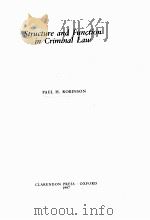
PART Ⅰ.INTRODUCTION1
Chapter 1.Structure and Function in Criminal Law3
A.The Formal Structure of Current Criminal Law4
B.The Operational Structure of Current Criminal Law6
C.A Functional Structure of Criminal Law8
PART Ⅱ.THE CURRENT OPERATIONAL STRUCTURE9
Chapter 2.The Basic Organizing Distinctions of Current Law11
A.The Offence-Defence Distinction11
B.The Current Operational Structure: Offence Definitions,Doctrines of Imputation, and General Defences12
Chapter 3.Offence Requirements16
A.The Conceptual Difficulties of the Actus Reus-Mens Rea Distinction16
1.Conceptual Diversity Within Actus Reus and Within Mens Rea17
2.Terminological Confusion Among the Doctrines of ‘Actus Reus’19
3.Conclusion and Proposal: Objective, Culpability, and Act-Omission Requirements22
B.Objective Elements of Offence Definitions23
1.Weaknesses in the Objective Element Categorization Scheme of Conduct, Circumstance, and Result Elements25
2.Confusion in the Modern Code Conceptualization of Causation Requirements27
C.The Act-Omission Requirements and the Involuntariness Defence31
1.The Role of the Statutory Act Requirement31
2.The Voluntariness Requirement as an Excuse35
D.Culpability Elements of Offence Definitions39
1.The Evolution to Element Analysis39
2.The Culpability Distinctions42
3.Asymmetry in the Definition of Culpability Requirements44
4.Difficulties With Modern American Culpability Schemes49
Chapter 4.Principles of Imputation57
A.The Process of Imputation57
B.The Doctrines of Imputation59
C.The Theories of Imputation64
Chapter 5.General Defences68
A.Non-exculpatory Defences71
1.Minimizing the Societal Costs of Non-exculpatory Defences72
2.The Nature of the Entrapment Defence78
B.Excuses81
1.The Internal Structure of Excuse Defences83
1.1 The Disability Requirement84
1.2 Four Kinds of Excusing Conditions and Their Implications85
1.3 Objective Limitations on Excusing Conditions88
2.A Disability-organized System of Excuses and the Problem of Multiple Excuses92
C.Justifications95
1.Three Kinds of Justification Defences96
2.The Internal Structure of Justification Defences98
3.Competing Theories of Justification:Deeds v.Reasons100
4.Incompatibility Between ‘Reasons’ Rationale and Current Law’s ‘Believes’ Formulations104
5.‘Deeds’ v.‘Reasons’: Liability Results105
5.1 Mistake as to a Justification105
5.1(1) Liability for Resisting a Mistaken Justification105
5.1(2) Privileged v.Unprivileged Force106
5.2 Unknowingly Justified Actor108
5.2(1) Disagreement over the Significance of Resulting Harm109
5.2(2) Unknowing Justification as a Legally Impossible Attempt111
5.2(3) Liability for Resisting an Unknowingly Justified Actor113
5.3 Summary of Liability Results114
6.‘Deeds’ v.‘Reasons’: Terminology and Conceptualization115
6.1 Clarity of Conceptualization: ‘Justification and Excuse’ v.‘Privileged Justification,Unprivileged Justification, and Excuse’115
6.2 Articulating the Criminal Law’s Commands to Those Bound by Them118
7.The Deeds-Reasons Dual Requirement Proposal121
8.Deeds v.Reasons: Summary and Conclusion123
PART Ⅲ.FUNCTIONAL STRUCTURE125
Chapter 6.A Functional Analysis of Criminal Law127
A.The Standard Conceptualization128
1.‘Actus Reus’ Requirements128
2.‘Mens Rea’ Requirements129
3.Defences137
B.Rule Articulation, Liability Assignment, and Grading138
Chapter 7.The Rules of Conduct143
A.Obscuring Rules of Conduct with an Overlay of Liability and Grading Rules143
B.Confusing Conduct Rules and Liability Judgements:Ambiguous Acquittals145
C.Mixing Rule Articulation and Liability Functions by Defining ‘Justified’ Conduct Subjectively: The Failure to Define the Justified Conduct Rules146
D.Mixing Conduct Rules of Risk-Creation with Liability Judgements of Risk-taking: The Failure to Define Criminal Risks148
E.Conclusion155
Chapter 8.The Doctrines of Liability157
A.Elevating Base and Aggravation Culpability Requirements to the Status of Criminalization Mental States:Improperly Limiting Attempt Liability157
B.Obscuring the Voluntariness Requirement’s Shared Liability Function with Excuses: Distorting the Involuntary Act Defence164
C.Conclusion169
Chapter 9.The Doctrines of Grading171
A.Mixing Liability and Grading by Using Culpability Terms to Define Prohibited Risks: Aggravation of Grade for Risk-Creation in the Absence of a Criminal Risk172
B.Incomplete and Unsystematic Use of Central Grading Factors174
C.Dichotomous v.Continuous Judgements: Using Rule-articulation and Liability-assignment Forms in Grading176
D.Grading v.Sentencing: The Arguments Against Judicial Sentencing as a Substitute for Grading178
E.Conclusion181
PART Ⅳ.USING STRUCTURE TO ADVANCEFUNCTION183
Chapter 10.Drafting a Code of Conduct185
A.Eliminate Liability and Grading Language185
B.Consolidate Overlapping Offences187
C.Simplify Justification Defences188
D.Use Simple, Accessible Language190
E.Track Community Views Where Possible194
Chapter 11.Drafting a Code of Adjudication196
A.Adopt a Code Structure that Matches the Analytical Process196
B.Include All Articulable Rules Relevant to Adjudication198
C.Use General Principles Whenever Possible199
D.Use Parallel Language in Conceptually Analogous Provisions201
E.Provide Jury Verdicts that Make Clear Their Meaning204
F.The Case Against ‘Acoustic Separation’207
Appendix A: A Code of Criminal Conduct211
Appendix B: A Code of Criminal Adjudication221
Index241
1997《STRUCTURE AND FUNCTION IN CRIMINAL LAW》由于是年代较久的资料都绝版了,几乎不可能购买到实物。如果大家为了学习确实需要,可向博主求助其电子版PDF文件(由PAUL H.ROBINSON 1997 CLARENDON PRESS·OXFORD 出版的版本) 。对合法合规的求助,我会当即受理并将下载地址发送给你。
高度相关资料
-

- Structure and Function in Man Fourth edition
- W.B.SAUNDERS COMPANY
-

- STRUCTURE AND FUNCTION IN PRIMITIVE SOCIETY
- 1999年12月第1版 中国社会科学出版社
-

- STRUCTURE AND FUNCTION IN BIOLOGICAL MEMBRANES VOLUME I
- 1965 HOLDEN DAY INC
-
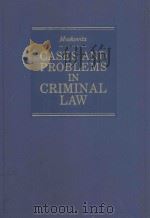
- CASES AND PROBLEMS IN CRIMINAL LAW
- 1989 ANDERSON PUBLISHING CO.
-
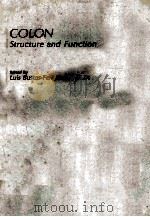
- COLON STRUCTURE AND FUNCTION
- 1983 PLENUM MEDICAL BOOK COMPANY
-
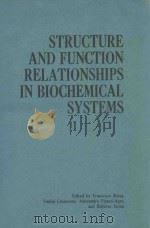
- STRUCTURE AND FUNCTION RELATIONSHIPS IN BIOCHEMICAL SYSTEMS
- 1982 PLENUM PRESS
-

- CELL STRUCTURE AND FUNCTION
- 1963 MODERN BIOLOGY SERIES
-
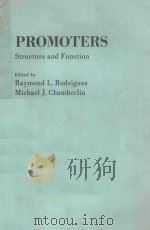
- PROMOTERS STRUCTURE AND FUNCTION
- 1982 PRAEGER SPECIAL STUDIES
-

- SUPRAMOLECULAR STRUCTURE AND FUNCTION
- 1998 WORLD SCIENTIFIC CO.PTE.LTD
-

- ACTION AND VALUE IN CRIMINAL LAW
- CLARENDON PRESS·OXFORD
提示:百度云已更名为百度网盘(百度盘),天翼云盘、微盘下载地址……暂未提供。➥ PDF文字可复制化或转WORD



